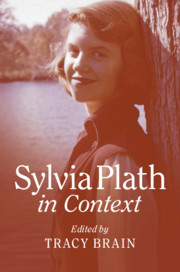Book contents
- Sylvia Plath in Context
- Sylvia Plath in Context
- Copyright page
- Contents
- Notes on Contributors
- Acknowledgements
- Chronology
- Abbreviations and Textual Note
- Key Archives
- Introduction
- Part I Literary Contexts
- Part II Literary Technique and Influence
- Part III Cultural Contexts
- Part IV Sexual and Gender Contexts
- Part V Political and Religious Contexts
- Part VI Biographical Contexts
- Part VII Plath and Place
- Part VIII The Creative Afterlife
- Bibliography
- Index
- References
Bibliography
Published online by Cambridge University Press: 03 August 2019
- Sylvia Plath in Context
- Sylvia Plath in Context
- Copyright page
- Contents
- Notes on Contributors
- Acknowledgements
- Chronology
- Abbreviations and Textual Note
- Key Archives
- Introduction
- Part I Literary Contexts
- Part II Literary Technique and Influence
- Part III Cultural Contexts
- Part IV Sexual and Gender Contexts
- Part V Political and Religious Contexts
- Part VI Biographical Contexts
- Part VII Plath and Place
- Part VIII The Creative Afterlife
- Bibliography
- Index
- References
- Type
- Chapter
- Information
- Sylvia Plath in Context , pp. 371 - 396Publisher: Cambridge University PressPrint publication year: 2019



